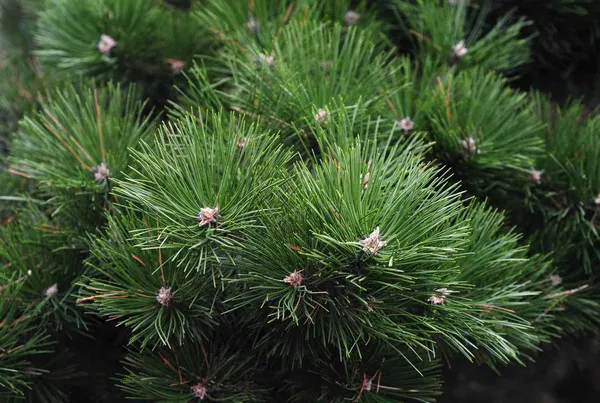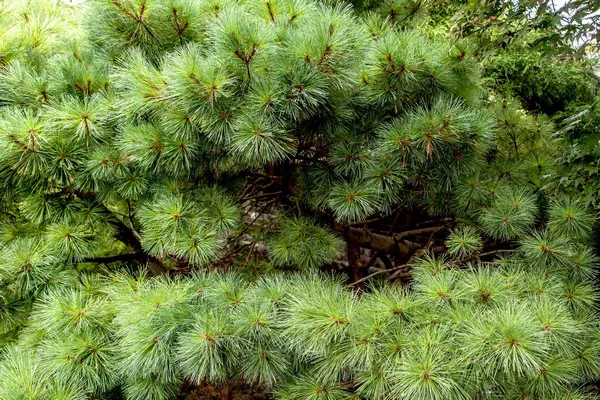Pine trees, with their towering stature, aromatic scent, and evergreen foliage, hold a special place in the hearts and landscapes of people around the world. As one of the most widespread and diverse groups of coniferous trees, pines are renowned for their resilience, adaptability, and economic importance. In this article, we embark on a journey to explore the most popular pine trees, delving into their unique characteristics, ecological significance, and cultural relevance. From the majestic Scots Pine of Europe to the iconic Ponderosa Pine of North America, we unravel the diverse tapestry of pine species that grace our forests, parks, and gardens.
5 Most Popular Pine Trees
1. Scots Pine (Pinus sylvestris):
Native to the vast boreal forests of Europe and Asia, the Scots Pine reigns as one of the most iconic and widely distributed pine species in the world. Characterized by its tall, straight trunk, orange-brown bark, and clusters of slender needles, the Scots Pine is a symbol of resilience and endurance in the harsh northern climates where it thrives. With its distinctive conical crown and resinous cones, this majestic pine plays a vital role in shaping the ecology of its native habitat, providing habitat for wildlife, stabilizing soils, and moderating microclimates.
In addition to its ecological importance, the Scots Pine holds cultural significance as a symbol of national identity and folklore in many European countries. From the ancient Caledonian forests of Scotland to the vast taiga landscapes of Russia, the Scots Pine has inspired artists, poets, and conservationists for centuries. Despite facing threats such as deforestation, climate change, and invasive pests, concerted conservation efforts aim to preserve the legacy of the Scots Pine for future generations to admire and cherish.
2. Eastern White Pine (Pinus strobus):
Stretching across the eastern regions of North America, from the Great Lakes to the Atlantic coast, the Eastern White Pine stands as a symbol of resilience and regeneration in the face of environmental change. With its towering stature, graceful branches, and soft, blue-green needles, the Eastern White Pine is a beloved fixture in parks, forests, and landscapes throughout its native range. Renowned for its rapid growth and valuable timber, this majestic pine has played a crucial role in shaping the history and economy of the United States and Canada.
In addition to its economic significance, the Eastern White Pine holds ecological importance as a keystone species in northeastern forests, providing habitat for a diverse array of wildlife and contributing to the health and biodiversity of its ecosystem. Despite facing threats such as habitat loss, invasive pests, and climate change, conservation efforts aim to protect and restore the Eastern White Pine and its native habitat for future generations to enjoy.
3. Ponderosa Pine (Pinus ponderosa):
Dominating the landscapes of the western United States, from the Rocky Mountains to the Sierra Nevada, the Ponderosa Pine stands as a symbol of strength and resilience in the rugged terrain of its native habitat. With its massive trunk, distinctive cinnamon-red bark, and clusters of long, slender needles, the Ponderosa Pine cuts a striking figure against the backdrop of the western landscape. Renowned for its towering stature and valuable timber, this iconic pine has long been revered by indigenous cultures and settlers alike for its myriad uses and cultural significance.
In addition to its economic importance, the Ponderosa Pine plays a vital role in shaping the ecology of western forests, providing habitat for wildlife, regulating water flow, and reducing the risk of wildfires through its fire-resistant bark and open canopy. Despite facing threats such as habitat fragmentation, invasive species, and climate change, conservation efforts aim to protect and restore the Ponderosa Pine and its native habitat for future generations to appreciate and enjoy.
4. Monterey Pine (Pinus radiata):
Native to the rugged coastline of central and southern California, the Monterey Pine stands as a symbol of resilience and adaptation in the face of coastal conditions. With its distinctive umbrella-shaped canopy, twisted branches, and clusters of dark-green needles, the Monterey Pine adds a touch of elegance and beauty to the coastal landscapes where it thrives. Renowned for its rapid growth and valuable timber, this iconic pine has played a crucial role in shaping the history and economy of the California coast.
In addition to its economic significance, the Monterey Pine holds ecological importance as a keystone species in coastal ecosystems, providing habitat for a diverse array of wildlife and helping to stabilize sand dunes and prevent erosion along the coastline. Despite facing threats such as habitat loss, urban development, and invasive species, conservation efforts aim to protect and restore the Monterey Pine and its unique coastal habitat for future generations to enjoy.
5. Longleaf Pine (Pinus palustris):
Stretching across the southeastern United States, from Virginia to Texas, the Longleaf Pine stands as a symbol of resilience and endurance in the fire-adapted ecosystems where it thrives. With its tall, straight trunk, distinctive needle-like leaves, and imposing stature, the Longleaf Pine cuts a majestic figure in the longleaf pine savannas and flatwoods of its native habitat. Renowned for its valuable timber, unique ecology, and cultural significance, this iconic pine has long been revered by indigenous cultures and settlers alike for its myriad uses and ecological importance.
In addition to its economic and cultural significance, the Longleaf Pine plays a vital role in shaping the ecology of southeastern forests, providing habitat for a diverse array of wildlife, including the endangered Red-cockaded Woodpecker, and maintaining the ecological balance of its ecosystem through regular fire regimes. Despite facing threats such as habitat loss, urban development, and invasive species, conservation efforts aim to protect and restore the Longleaf Pine and its unique ecosystem for future generations to appreciate and cherish.
See Also: 6 Most Common Hanging Plants
Conclusion:
In conclusion, the most popular pine trees represent a diverse array of species that embody the beauty, resilience, and ecological importance of coniferous forests around the world. From the majestic Scots Pine of Europe to the towering Ponderosa Pine of North America, each species holds a unique place in the hearts and landscapes of people across the globe. However, rampant deforestation, climate change, and invasive pests threaten the survival of these iconic pines, underscoring the urgent need for concerted conservation action.
By protecting and restoring the habitats of these magnificent trees, promoting sustainable forestry practices, and raising awareness about their ecological importance, stakeholders can ensure a brighter future for pine forests and the myriad species that depend on them for survival. As guardians of our planet’s biodiversity, we have a collective responsibility to preserve the beauty and splendor of the world’s most iconic trees, including the majestic pines that grace our forests, parks, and gardens. Through sustained conservation efforts and global cooperation, we can secure a future where these iconic trees continue to thrive and inspire awe and admiration for generations to come.
You Might Be Interested In:
























